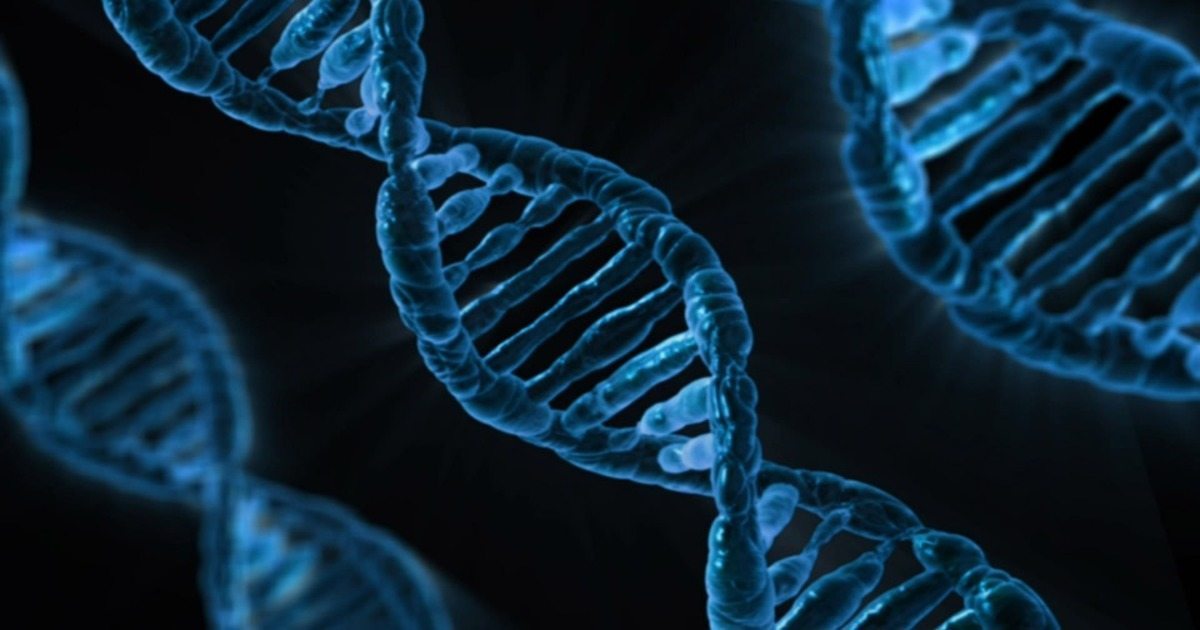Mesothelioma Help Cancer News

The Faces and People Behind the Mesothelioma Statistics
When diagnosed with malignant mesothelioma, the survival statistics can be daunting to comprehend. Statistics are numbers, and it is vital that you remember that there are people behind those numbers. People with lives and families, like your own. Sometimes it is good to hear stories of people that are living with mesothelioma as part of their lives. Professionals tell us that there are survivors, but to talk to one, to see one living their best life can be very helpful for both patients and caregivers.
In the publication “Breath of Hope,” by the Mesothelioma Applied Research Foundation, the cover is about two people with malignant pleural mesothelioma who have connected after both having one of their lungs removed. These two people, Heather and John, connected in 2013 on Facebook. Heather is a survivor. Diagnosed in 2005, she had surgery in 2006 in which she had a left extrapleural pneumonectomy with heated intra-op chemotherapy.
John was diagnosed in 2012, and he underwent a right extrapleural pneumonectomy after undergoing chemotherapy before the surgery. Every person’s journey with mesothelioma is different, but there are similarities in the positive lessons they have taken from their experiences.
John talks about how important music has been throughout his life, and even more so now with his journey with mesothelioma. Heather was a hair professional before mesothelioma. She has been unable to go back to that line of work, and she has shifted her focus to patient advocacy.
Heather said, “I look at things far differently than I did before cancer and would say I’m a better person for it. I’ve tried taking something terrible and find the good.”
Both are parents of a daughter. Both have learned to savor every minute of being a parent, of being alive, and in being able to influence their daughters.
Both acknowledge that there have been times of despair. Both have had challenges along the way. Both are living their lives with mesothelioma. Both have become friends with similar interests besides mesothelioma.
Heather finishes the article saying, “…it’s the people that are the silver lining in every storm.”
People not statistics, stories behind the numbers, faces of survivors with malignant pleural mesothelioma sharing their journey and their lives, helping others. Living with mesothelioma.

Mesothelioma Community Excited About First-Ever Gene Therapy Approval From FDA
In July, MesotheliomaHelp reported on the pending approval of two different types of gene therapy for treating cancer and inherited diseases. Last week, the U.S. Food and Drug Administration announced approval of one of the therapies in a landmark approval of the first-ever gene therapy for a type of leukemia. The mesothelioma community is hopeful that this approval will lead to a new treatment for the incurable cancer.
In an August 30 press release, the FDA announced its “historic action” with the approval of Kymriah (tisagenlecleucel), from Novartis Pharmaceuticals Corp., for the treatment of a form of acute lymphoblastic leukemia (ALL). The press release conveyed an air of excitement in announcing that the first gene therapy approval in the United States is “ushering in a new approach to the treatment of cancer and other serious and life-threatening diseases.”
“We’re entering a new frontier in medical innovation with the ability to reprogram a patient’s own cells to attack a deadly cancer,” said FDA Commissioner Scott Gottlieb, M.D. “New technologies such as gene and cell therapies hold out the potential to transform medicine and create an inflection point in our ability to treat and even cure many intractable illnesses.”
The FDA explains how the new therapy will work:
“Each dose of Kymriah is a customized treatment created using an individual patient’s own T-cells, a type of white blood cell known as a lymphocyte. The patient’s T-cells are collected and sent to a manufacturing center where they are genetically modified to include a new gene that contains a specific protein (a chimeric antigen receptor or CAR) that directs the T-cells to target and kill leukemia cells that have a specific antigen (CD19) on the surface. Once the cells are modified, they are infused back into the patient to kill the cancer cells.”
Known as CAR-T, the new therapy is a process that genetically alters a patient’s own cells to fight cancer. Mesothelioma medical professionals hold out hope that ultimately this gene therapy could ultimately bring an effective treatment to mesothelioma patients.
Expert Insight
Francis S. Collins, M.D., Ph.D., Dir. NIH
“I’m eager to see where our immunotherapy researchers take us next!”
In a 2013 article for MesotheliomaHelp, Ricki Lewis, a science writer with a PhD in genetics, wrote about CAR-T treatment saying, “An ingenious technique that has vanquished leukemia in a handful of patients is also being applied to mesothelioma.” She was referring to a mesothelioma clinical trial from the University of Pennsylvania that uses the “doctored T cells,” known as chimeric immune receptor (CIR) instead of CAR, against mesothelin, a protein that is found to be in excess in mesothelioma and other cancers. The idea is that T cells led to the mesothelioma cells will attract an immune response, said Lewis.
Find out more about the mesothelioma clinical trial from University of Pennsylvania here.
Although the Director of the National Institutes of Health, Francis S. Collins, M.D., Ph.D., heralds immunotherapy as “one of the most exciting areas of progress” in cancer treatment, he notes caution should be taken in the widespread use of the drug, according to an Aug. 30 NIH Director’s Blog entry.
“Many questions must be addressed before we can herald immunotherapeutic approaches to cancer an unqualified success,” said Collins. “There are still too many severe reactions, too many non-responses or relapses, and, potentially, a very high price tag for their widespread use, which will be truly challenging to scale up. But we’re off to a promising start.”
Mesothelioma is a cancer caused by past exposure to asbestos. Nearly 3,000 Americans are diagnosed with the terminal cancer each year.
Sources:
- August 30 press release
https://www.fda.gov/NewsEvents/Newsroom/PressAnnouncements/ucm574058.htm - NIH Director’s Blog
https://directorsblog.nih.gov/2017/08/30/fda-approves-first-car-t-cell-therapy-for-pediatric-acute-lymphoblastic-leukemia - mesothelioma clinical trial
https://clinicaltrials.gov/ct2/show/NCT01590472

Dad’s Enthusiasm For Mesothelioma Advocacy Keeps Me Going
After my father’s surgery at NYU Langone, he stayed with my husband and me for about a week before making the final three hour trek home. It was during that time that we started talking about fundraising for the Mesothelioma Applied Research Foundation. Dad was excited about it, you could see the gleam in his eyes. He loved being a part of events and parties, and this was something personal to him. He was all in!
Our first fundraiser was at Dunbar Community Fest in the town where he lived his entire life. As we began to plan our part, donations started coming in from family and friends. We were overwhelmed by the outpouring of generosity and love. The morning of the event, we set up and began waiting for the crowds to arrive.
I will never forget watching Dad that day. He almost served as the “ambassador” of our little tent. He stood out in front, talking to everyone and greeting them with a smile. Living in a small town, everyone knows each other. My father was well-loved, and the entire community was happy to see him doing so well and present for the event.
When we finally packed up and headed home, Dad was grinning ear to ear, talking about all the people he saw that day, and humbled by all the prayers and well wishes offered to him.
Throughout the rest of his life, Dad was always involved in any fundraisers that we did. Shortly before he passed away, he missed the Community Fest because he was in the hospital. I know he was sad to miss it, but encouraged us to go forward with our booth, knowing it was meant to help others.
He is my inspiration for continuing to help this cause. Even when he was down, Dad was a light to others in ways he never knew. I am proud to continue the work on his behalf, knowing he is smiling down on us from Heaven.

Older Mesothelioma Patients “Less Likely” to Receive Treatment
Last week, MesotheliomaHelp reported on the benefits of mesothelioma patients receiving trimodal therapy. Now, in another study aimed at better understanding the patterns of mesothelioma care and the associated survival, researchers found a startling number of untreated mesothelioma patients in the U.S.
Researchers from the National Cancer Institute reviewed the data of mesothelioma patients, identified as such from the Surveillance, Epidemiology, and End Results (SEER) Program of the NCI. SEER provides information on cancer statistics in an effort to reduce the cancer burden among the U.S. population. The data backed findings that mutli-modal therapy is best, however, the researchers discovered that nearly one-third of U.S. mesothelioma patients do not receive cancer therapy.
The study reviewed records of 389 pleural mesothelioma patients and 53 non-pleural mesothelioma patients, all of who were diagnosed in 2011. The researchers highlight the following key points of the study:
- 29.3% of the pleural mesothelioma patients and 21.5% of the non-pleural patients do not receive cancer therapy.
- Older pleural patients [older than 70-years] were less likely to receive therapy.
- Median survival was 8 months among pleural mesothelioma patients and 18 months among non-pleural mesothelioma patients.
- Among pleural mesothelioma patients receipt of surgery and systemic therapy was associated with the best survival.
Further information showed that, not surprisingly, younger pleural mesothelioma patients had better survival. In addition, 60 percent of the patients received some form of systemic treatment, which includes chemotherapy and immunotherapy, although the older population was “less likely” to undergo the treatments.
Patients may refuse treatment for a variety of reasons, and understanding and respecting the wishes of a patient is important. Read how one nurse explains a “Mesothelioma Patients’ Treatment Plans Can Match Their Wants.”
Of concern to the team is the fact that with all the mesothelioma research being done to find an effective treatment, and potentially a cure for the now incurable cancer, nearly one-third of the patient population could be missing out on extended survival.
Expert Insight
Lindsey Enewold, PhD, MPH, NCI
“Our findings indicate that only a subset of mesothelioma patients realize the benefit of established treatment options.”
The researchers point out that clinical trials “offer the best hope of finding more effective treatments for mesothelioma,” yet still, less than 5% of pleural mesothelioma patients and less than 2% of the non-pleural mesothelioma patients actually participated in a trial.
“Expanding our understanding of the particular challenges to participation in clinical trials in mesothelioma is essential to making an impact on this disease,” reported the researchers.
“These findings indicate the need for efforts to ensure equitable application of currently available therapies to all patients,” concluded the authors.
According to the NCI, the major cause of malignant mesothelioma is exposure to asbestos, including people who were exposed to asbestos in the workplace and their family members. Development of mesothelioma from asbestos exposure via a loved one is called second hand exposure. Exposure to asbestos can lead to mesothelioma decades later. Nearly 3,000 Americans are diagnosed with mesothelioma each year.
Read the full study, “Patterns of care and survival among patients with malignant mesothelioma in the United States,” in the August 10 journal Lung Cancer.
http://www.lungcancerjournal.info/article/S0169-5002%2815%2900157-9/abstract

Be Prepared for Mesothelioma Awareness Day With the Facts
As the summer winds down and Fall approaches it is time for new beginnings. For the kids, it is the start of the new school year. For the mesothelioma community, September brings Mesothelioma Awareness Day on September 26. The day has been set aside since 2004 for the mesothelioma community to raise awareness about mesothelioma.
Over the years we have learned from the patients and families we have had the privilege to care for, that most people know two things about mesothelioma. The first is that mesothelioma is caused by asbestos. Most people then go on to say, “but we don’t have asbestos in the U.S. anymore.” The second thing that our patients have said over the years is that they have heard of mesothelioma from the television ads. They know the word, they know it is a serious cancer, but that is about it.
The Awareness day is to help the mesothelioma community enlighten more people to the facts about asbestos exposure, asbestosis and mesothelioma:
- Mesothelioma is a rare cancer. It is less than 1% of all cancers.
- The number of people affected in the United States is approximately 2,800 to 3,000 people a year.
- Asbestos is not banned in the United States, it is still used in many products.
One of the most important things that needs to be emphasized, is that despite the history of malignant mesothelioma, there is hope. Hope that this disease can be cured. Hope that the doctors and researchers and scientists who have dedicated their careers to this disease, are making progress.
Raising awareness starts with all of us. There are planned events for the day including encouraging people to wearing blue, and assembling at Rockefeller Plaza in New York on the set of the Today Show to spread the word.
Awareness helps to put a face to a deadly cancer. Education and research along with hope, can only help further the work of the mesothelioma community.
On September 26, Mesothelioma Awareness Day, plan to make a difference!
Free Mesothelioma Patient & Treatment Guide
We’d like to offer you our in-depth guide, “A Patient’s Guide to Mesothelioma,” absolutely free of charge.
It contains a wealth of information and resources to help you better understand the condition, choose (and afford) appropriate treatment, and exercise your legal right to compensation.
Download Now